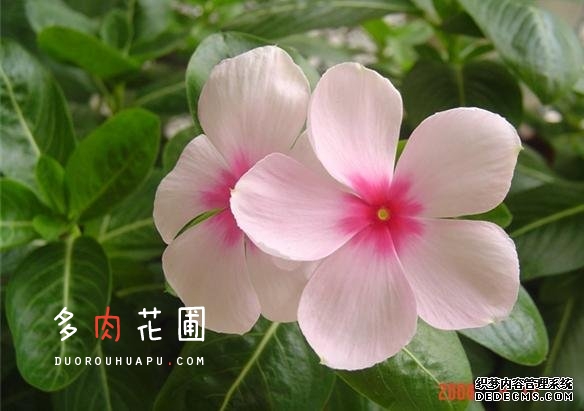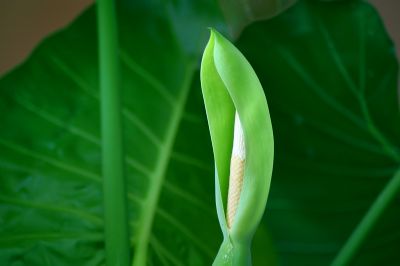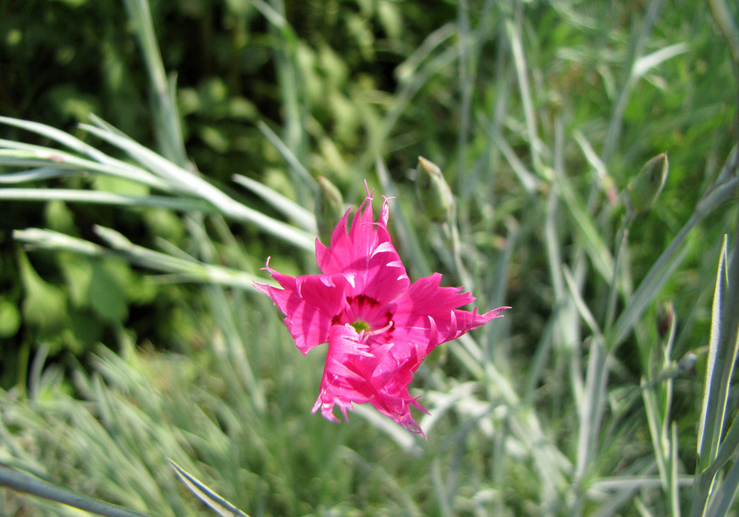Culture method of Catharanthus roseus (four Seasons Plum)
Catharanthus roseus originated from tropical Asia, warm nature, not cold, avoid wet fear of waterlogging, all soil can be cultivated Catharanthus roseus, but saline-alkali soil is not suitable, with good drainage, wind breathable sandy soil is good.
When potted periwinkle, to use humus-rich loose soil, seedlings grow 6-7 true leaves when the pot. 7-8 cm high seedlings when the first time, and then can also be picked twice to promote multiple branches, more flowers. Changchun flowers should not be watered too much at ordinary times, too wet affects growth and development. Some nitrogen fertilizer can be applied during the growth period of Catharanthus roseus, and some phosphorus fertilizer can be added during the budding period. The flowers must be trimmed after they are finished.
Catharanthus roseus avoid wet fear of waterlogging, pot soil watering should not be too much, too wet affect growth and development. In particular, indoor winter plants should be strictly controlled watering, dry as well, otherwise extremely susceptible to freezing. Open field cultivation, summer showers, pay attention to timely drainage, to avoid waterlogging caused by the death of the whole piece.

Biological characteristics of periwinkle periwinkle is native to eastern africa. Likes warm, slightly dry and sunny environments. The suitable temperature for growth is 18~24℃ from March to July, 13~18℃ from September to March of the next year, and the temperature in winter is not lower than 10℃. Catharanthus roseus avoid wet fear of waterlogging, pot soil watering should not be too much, too wet affect growth and development. In particular, indoor winter plants should be strictly controlled watering, dry as well, otherwise extremely susceptible to freezing. Open field cultivation, summer showers, pay attention to timely drainage, to avoid waterlogging caused by the death of the whole piece. Periwinkle propagation: periwinkle is propagated by sowing. Sowing in early spring, seedlings grow slowly in the early stage, and when the seedlings grow to 3 - 4 true leaves, they begin to be transplanted, and when they have 6-8 pairs of true leaves, they can be planted. In May planting flower bed, every 3 - 5 days watering once, appropriate topdressing phosphorus and potassium fertilizer, flowers and leaves luxuriant. Cuttage propagation: can be in the spring to take the winter old plant shoots, cut 8 cm long, with some leaves, inserted in the wet sandy loam, rooting temperature of 20℃-25℃, pay attention to shade and maintain humidity. Miao height of 10 cm, hit the top to promote hair tree, and then on the three-inch basin, gradually turned to seven-inch basin. And the mature fruit of periwinkle can crack and scatter seeds by itself. Attention should be paid to observe when the fruit turns yellow, that is, it should be picked up in time, otherwise it will be difficult to collect seeds. It can be planted three times a year, with an annual output of more than 1300 kilograms of hay per mu. Growing season every 30 days or so topdressing 1, always pay attention to watering, but not water, pay attention to drainage in rainy season. In order to promote branching, 2-3 times of topping should be carried out from planting to mid-August, so that flowers and leaves can flourish. Overwintering temperature is 10-12℃. When the temperature rises to about 10C, the seedlings will be transplanted once when 4-5 pairs of true leaves grow out, and the young shoots on the overwintering old plants can also be taken for cuttage in spring. Easy to manage, cultivation methods and precautions for four seasons plum are suitable for potted plants
Four seasons plum, also known as spring, new day, spring flowers, periwinkle, four seasons spring, five-petal plum, wild goose red, open every day and so on. The following is a small series of four seasons plum breeding methods and precautions, together to learn about it.
1. The cultivation method of four-season plum
1. Cultivation method of four-season plum: fertilization
Growing season every 30 days or so topdressing 1, always pay attention to watering, but not water, pay attention to drainage in rainy season. In order to promote branching, 2-3 times of topping should be carried out from planting to mid-August, so that flowers and leaves can flourish. Overwintering temperature is 10-12℃. When the temperature rises to about 10C, the seedlings will be transplanted once when 4-5 pairs of true leaves grow out, and the young shoots on the overwintering old plants can also be taken for cuttage in spring. Easy to manage.
When fertilizing, compound fertilizer and liquid fertilizer can be alternately applied once every ten days. Changchun pot soil bottom should also try to spread a layer of base fertilizer, in order to ensure the nutrient content of pot soil.
2. Cultivation method of four-season plum: moisture
Catharanthus roseus avoid wet fear of waterlogging, pot soil watering should not be too much, too wet affect growth and development. In particular, indoor winter plants should be strictly controlled watering, dry as well, otherwise extremely susceptible to freezing. Open field cultivation, summer showers, pay attention to timely drainage, to avoid waterlogging caused by the death of the whole piece.
3. Cultivation method of four-season plum: temperature
The optimum temperature for growth is 18~24℃ from March to July, 13~18℃ from September to March of the following year, and the temperature in winter is not lower than 10℃.
4. Breeding methods of four-season plum:
Sowing and propagation are adopted more often. Sowing in early spring, seedlings grow slowly in the early stage, and when the seedlings grow to 3 - 4 true leaves, they begin to be transplanted, and when there are 6-8 pairs of true leaves, they can be planted. In May planting flower bed, every 3 - 5 days watering once, appropriate topdressing phosphorus and potassium fertilizer, flowers and leaves luxuriant.
Cuttage propagation: can be in the spring to take the winter old plant shoots, cut 8 cm long, with some leaves, inserted in the wet sandy loam, rooting temperature of 20℃-25℃, pay attention to shade and maintain humidity. Miao height of 10 cm, hit the top to promote hair tree, and then on the three-inch basin, gradually turned to seven-inch basin. Mature fruit can split seeds on its own, should pay attention to observe the fruit yellow, that is, should be picked up in time, otherwise it is difficult to pick seeds. It can be planted three times a year, with an annual output of more than 1300 kilograms of hay per mu.
5. Cultivation method of four-season plum: disease control
Common pests and diseases: leaf rot, rust and root wart nematode damage.
Control method: leaf rot disease with 65% zebrazine wettable powder 500 times liquid spraying. Rust was sprayed with 2000 times solution of 50% chlorhexidine WP. Rootknot nematodes were controlled by spraying 50 times solution of 80% DBCP EC. Or multi-use microbial fertilizer control.
Two, four seasons plum farming precautions
1. More suitable for potted plants, but pay attention not to let the plants grow too high, affecting indoor decoration and viewing, so after surviving in the upper pot, it is necessary to pick the heart several times to promote multiple branches and more flowers, and cut off the residual flowers after flowering.
2. Fertile and well-drained soil should be used, and barren soil should be tolerated, but alkaline soil should not be avoided. Hardened, poorly aerated, clayey soil resulting in poor plant growth, yellow leaves, and no flowering.
3. Sowing should be done with loose artificial medium, bed sowing, box sowing and plug seedling if conditions permit. The medium requires pH value of 5.8~6.2, EC value of 0.5~0.75, disinfection treatment, and medium temperature of 22~25℃ after sowing.
- Prev

8 common breeding problems of Dishui Guanyin
Dishui Guanyin is a common indoor plant, perennial herb. The stem is thicker and has obvious effect on dust removal. Guangdong people call Guanyin dripping wolf poison. The reason is that Dishui Guanyin is toxic. If you are a child at home, be careful if you want to cultivate Dishui Guanyin.
- Next

Breeding methods and matters needing attention of Beauty Carnation
The cultivation technique can be propagated with vegetative branches or cuttings, and it can also be divided in spring. Cultivation management 1. Transplant: 3 to 4 weeks after germination, the seedlings can be transferred to flowerpots with a □ diameter of 9 to 11 cm. two。 Substrate: the cultivation substrate should be well drained, and the clay content in the substrate is 15%.
Related
- Fuxing push coffee new agricultural production and marketing class: lack of small-scale processing plants
- Jujube rice field leisure farm deep ploughing Yilan for five years to create a space for organic food and play
- Nongyu Farm-A trial of organic papaya for brave women with advanced technology
- Four points for attention in the prevention and control of diseases and insect pests of edible fungi
- How to add nutrient solution to Edible Fungi
- Is there any good way to control edible fungus mites?
- Open Inoculation Technology of Edible Fungi
- Is there any clever way to use fertilizer for edible fungus in winter?
- What agents are used to kill the pathogens of edible fungi in the mushroom shed?
- Rapid drying of Edible Fungi

